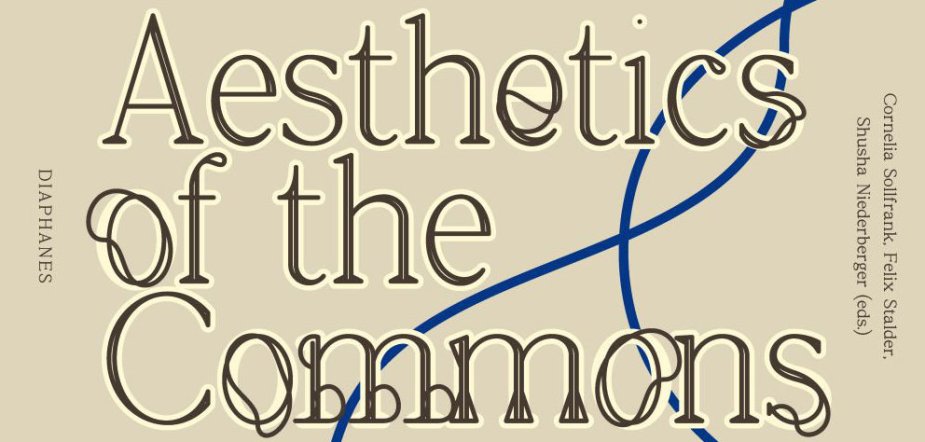Publikation: Christoph Brunner – Concatenated Commons and Operational Aesthetics
Veröffentlichung von Christoph Brunners Sammelbandbeitrag Concatenated Commons and Operational Aesthetics

Als Teil des Sammelbandes Aesthetics of the Commons, herausgegeben von Cornelia Sollfrank, Felix Stalder und Shusha Niederberger erscheint Ende Januar 2021 Christoph Brunners Beitrag Concatenated Commons and Operational Aesthetics.
Inhaltsbeschreibung des Sammelbandes
What do a feminist server, an art space located in a public park in North London, a ‘pirate’ library of high cultural value yet dubious legal status, and an art school that emphasizes collectivity have in common? They all demonstrate that art can play an important role in imagining and producing a real quite different from what is currently hegemonic; that art has the possibility to not only envision or proclaim ideas in theory, but also to realize them materially.
Aesthetics of the Commons examines a series of artistic and cultural projects—drawn from what can loosely be called the (post)digital—that take up this challenge in different ways. What unites them, however, is that they all have a ‘double character.’ They are art in the sense that they place themselves in relation to (Western) cultural and art systems, developing discursive and aesthetic positions, but, at the same time, they are ‘operational’ in that they create recursive environments and freely available resources whose uses exceed these systems. The first aspect raises questions about the kind of aesthetics that are being embodied, the second creates a relation to the larger concept of the ‘commons.’ In Aesthetics of the Commons, the commons are understood not as a fixed set of principles that need to be adhered to in order to fit a definition, but instead as a ‘thinking tool’—in other words, the book’s interest lies in what can be made visible by applying the framework of the commons as a heuristic device.
Zusammenfassung von Christoph Brunners Beitrag Concatenated Commons and Operational Aesthetics
Christoph Brunner takes seriously the artists’ claim that “a functioning piece of software can function as an argument: one that is impossible to make if you can only refer to an idea, or a plan, or a theory.” Based on a detailed analysis of the video platforms 0xDB and pad.ma, which run on a custom-developed platform, he elaborates the notions of “concatenated commons” and “operational aesthetics” by drawing on theories by William James, Deleuze and Guattari, and Donna Haraway. His focus on the commons is on “temporalizing activations rather than groups, or places,” foregrounding how unique instances of commoning (places or groups) are held together by specific types of movement. Commons, then, is first and foremost “a potential of relating, of resonating across different durations, a power to concatenate that can take many forms but does not predetermine the form it takes.” Operational aesthetics, he writes, “engage bodily capacities of sensing but extend these capacities into an ecological situatedness that is material, processual and transtemporal.” Thus, it encompasses both “part of the programmed and coded structure, as much as the confluence of material, embodied, perceptual and conceptual infrastructures of sense-making.”
Aesthetics of the Commons erscheint Ende Januar 2021 bei diaphanes, Zürich. Es ist als Taschenbuch zu ca. 25€ erwerben und in digitaler Version kostenfrei zugänglich, das Kapitel von Christoph Brunner ist einzeln ebenfalls kostenfrei in digitaler Version verfügbar.